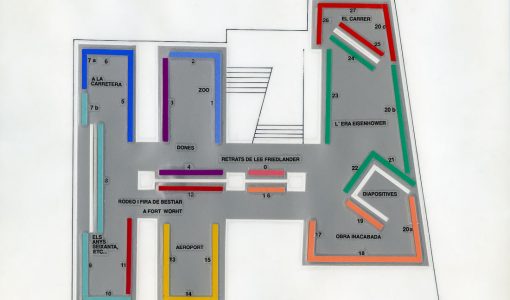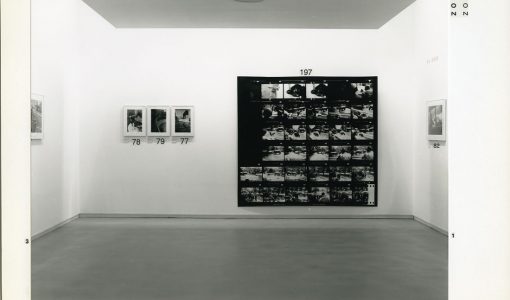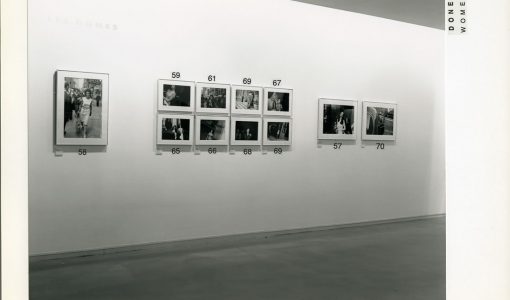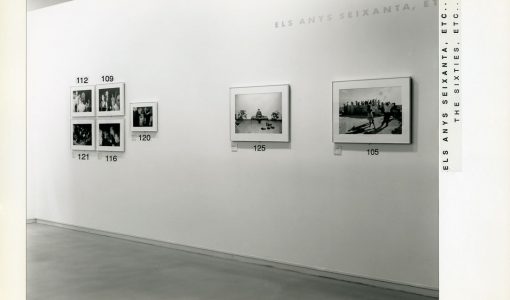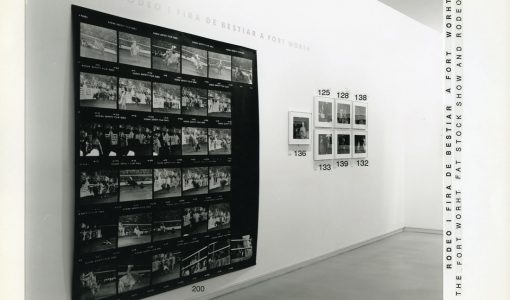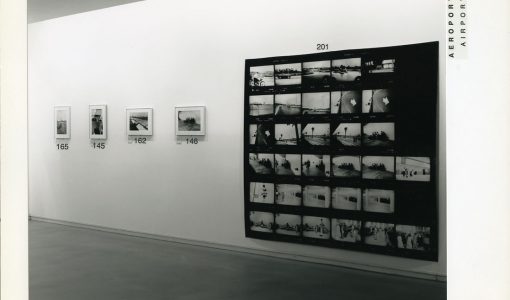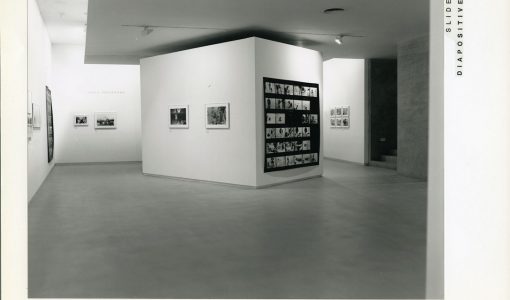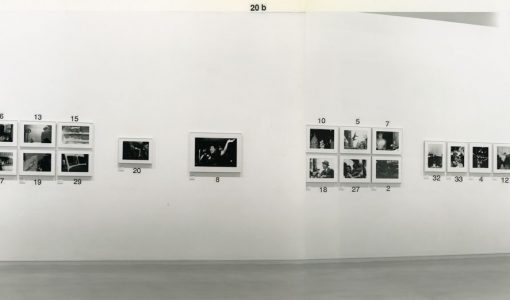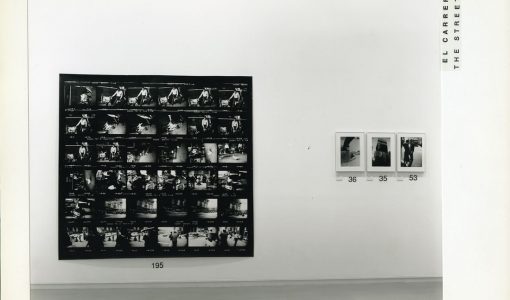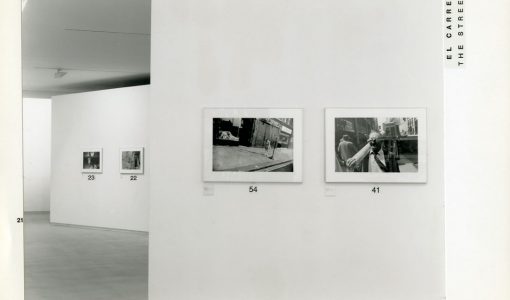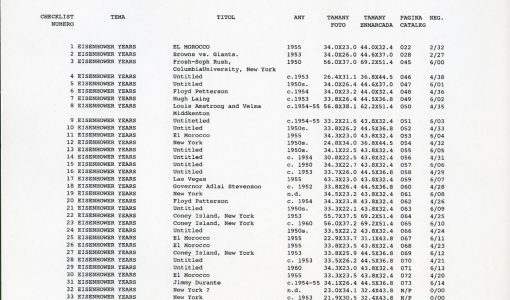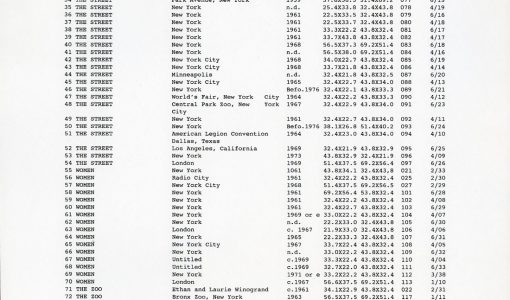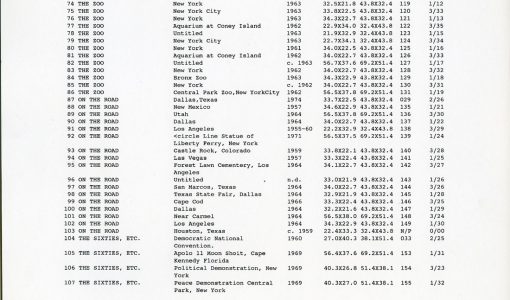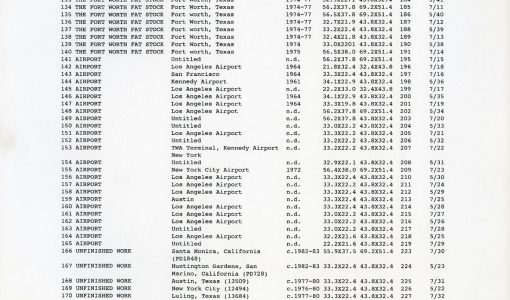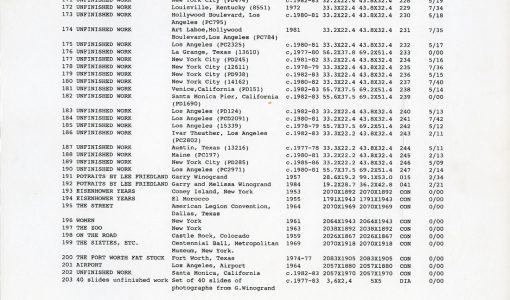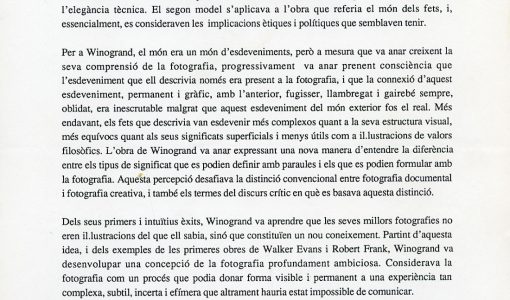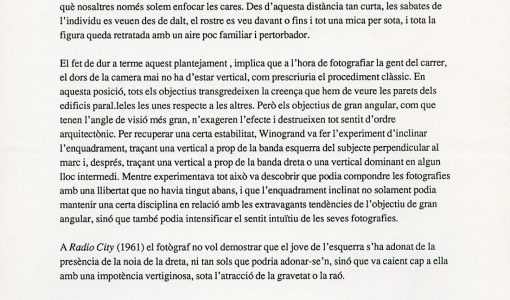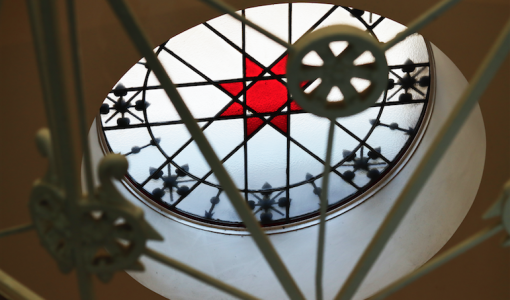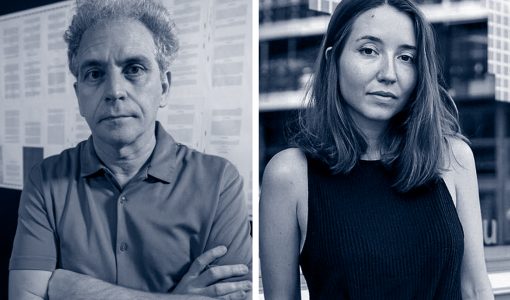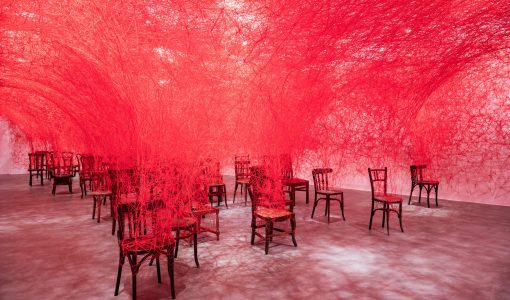
Garry Winogrand: Fictions of the Real World
Home
›
Exhibitions
›
Garry Winogrand: Fictions of the Real World
Winogrand was a controversial figure throughout his career and it is only recently that the value of his work has been widely recognised. He was born in the Bronx district of New York on 14 January 1928. Although he began to study at City College in 1947, he soon (1948) enrolled in Henry Carnohan’s painting classes at University.
On the advice of his fellow student George Zimbel (who worked as a photographer for the Columbia Spectator) he lost no time going into the world of photography.
In 1949 he enrolled for Alexey Brodovitch’s classes at the New School for Social Research in New York. As art director of Harper’s Bazaar, Brodovitch had been one of the leading spokesmen for the new trends in photography.
In 1951 Winogrand was hired as a contributor for the Pix Agency where, as well as being reunited with Zimbel, he met Ed Feingersh, one of the leading exponents of the new American photography. In 1954 Feingersh recommended him to the agent Henrietta Brackman – with whom he worked until 1955 – whose clients included Dan Weiner, one of the outstanding photographers of the day. His photographs began to appear sporadically in Collier’s, Argosy, Pageant, Redbook, Men, Gentry, Climax and Sports Illustrated. At that time, Szarkowski wrote that Winogrand exploited superficial themes, with human interest and social influence, which his colleagues also exploited. Even so, some works from that period show a differentiating singular quality, especially the ones that describe a world full of visceral energy and a provocative beauty that almost becomes violence.
In late 1955 Winogrand – with his wife Adrienne – made his first “photographic journey” around the United States. By then he had discovered the work of Walker Evans, which had made a strong impression on him. It should also be noted that at the same time Robert Frank – also an admirer of Evans, but whom Winogrand did not know – was doing the series of photographs for the book The Americans, which had a considerable impact.
In those years, however, photojournalism was entering a period of crisis largely due to the growing importance of television, which rendered the photographic genre somewhat anachronistic. Winogrand felt the consequences and stopped receiving commissions from his regular customers, among them Collier’s magazine, which had ceased publication. That marked the beginning of a period of reflection about his own work. The premature death of his friend Feingersh and the start of the break-up of his marriage highlighted the personal crisis he had to cope with in the late fifties. Years later he said that it was not until 1960 that he became a “serious photographer”.
Between 1960 and 1965 the central theme of much of his output was women in the street, a motif he never abandoned and about which, in 1975, he published his book Women are Beautiful.
In the early sixties he also did a large series of photographs for the zoo in Central Park, sometimes on the strolls he took there with his children. In 1969 he published a selection in The Animals.
At that time he began to use wide-angle lenses for the photographs he took in the street and experimented with new modes of composition. According to Szarkowski, he used them as a way of including what he wanted to from a closer strategic point, from where he could photograph a passer-by from head to foot (for example) from a distance that we normally only use to focus faces. He often compensated for the distortions caused by the wide-angle lens by trimming the edges of the photographs. As he gained more control over the technique, his freedom of expression became increasingly evident. So, as he gradually gave up commercial commissions and lost his interest in reportage, his photographs took on an increasingly personal nature.
In the seventies the images he took in the street, at football stadiums or the cattle fairs at Fort Worth introduced a greater conceptual and compositional complexity. One instance is the photograph he took in 1974 during a football match at the University of Texas, where the 22 players are seen in motion. Chance played an important part in taking the picture.
In those years Winogrand also worked intensely on photographing public events, a motif he had been familiar with since 1960 when he took a series of photographs at the Democratic Party Convention. The controversial exhibition Public Relations, held at The Museum of Modern Art in New York in 1977, brought together the finest examples.
From the sixties Winogrand combined his career as a photographer with academic tasks, first at the Parsons School of Design in New York and later, sporadically, at the School of Visual Arts and the Cooper Union for the Advancement of Science and Art, both in New York; at the Institute of Design in Chicago, the Massachusetts College of Art in Boston, Columbia College, also in Chicago, and the University of California in Los Angeles, among others. He forged his strongest tie with the university, however, when he taught at the University of Texas, in Austin, over a period of five years (1973-1978). During that time he produced the series of photographs of the Fort Worth cattle fair and rodeo.
In 1978 he definitively gave up teaching. He had attained a certain economic stability and decided to devote himself fully to his career as a creator. Now living in Los Angeles, he used a grant from the John Simon Guggenheim Foundation to photograph aspects of life in the city. The motifs of his photographic series from then on are recurrent: Farmer’s Market, Hollywood Boulevard, Grauman’s Chinese Theater, Muscle Beach.
In the last years of his life, Winogrand – who died in Mexico on 19 March 1984 – was a tireless worker, taking photographs at a frenzied pace. Witness to that are the thousands of undeveloped reels he left.
Galeria d'imatges
Dates
21.02.1991 – 14.04.1991
Curator
John Szarkowski.
Artist
Garry Winogrand.
Organised by
The Museum of Modern Art, New York.
Touring
The Museum of Modern Art, New York.
The Art Institute of Chicago
Carnegie Mellon University Art Gallery, Pittsburgh.
The Museum of Contemporary Art, Los Angeles.
Archer M. Huntington Art Gallery, University of Texas, Austin.
Center for Creative Photography, University of Arizona, Tucson.
Mole Antonelliana, Turin.
Hayward Gallery, London.
Museum Folkwang, Essen.
21/2/1990 – 14/4/1991, Fundació Antoni Tàpies, Barcelona.
